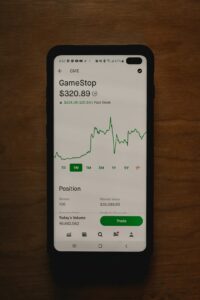Understanding High Frequency Forex Trading Strategies
In the fast-paced world of forex trading, high frequency trading (HFT) strategies have gained significant popularity among traders. HFT strategies involve the use of powerful computers and complex algorithms to execute a large number of trades in fractions of a second. This article aims to provide a comprehensive understanding of high frequency forex trading strategies.
High frequency trading strategies leverage the speed and efficiency of computerized trading systems to exploit small price discrepancies in the forex market. These strategies aim to generate profits from short-term price fluctuations, often taking advantage of market inefficiencies and liquidity imbalances.
One of the key features of HFT strategies is the use of algorithmic trading. Algorithms are sets of rules and instructions that guide computer programs to execute trades automatically. These algorithms are designed to analyze massive amounts of market data, identify patterns, and execute trades based on predefined criteria.
There are several types of high frequency forex trading strategies commonly employed by traders:
1. Market Making: Market makers are liquidity providers who continuously quote bid and ask prices for a specific currency pair. They profit from the spread between the bid and ask prices. HFT market makers use algorithms to rapidly adjust their quotes based on market conditions, ensuring they are always providing competitive prices.
2. Statistical Arbitrage: Statistical arbitrage strategies aim to exploit price discrepancies between related currency pairs. These strategies rely on complex statistical models to identify pairs that are statistically mispriced. HFT algorithms execute simultaneous buy and sell orders to capture the price difference.
3. News-Based Trading: News-based trading strategies involve reacting to market-moving news events, such as economic data releases or central bank announcements. HFT traders use algorithms to instantly analyze news articles and data feeds, seeking to identify trading opportunities before the broader market reacts.
4. Scalping: Scalping strategies involve taking small profits from frequent trades. HFT scalpers enter and exit positions within seconds or minutes, relying on the high trading volume and liquidity in the forex market. Algorithms are used to quickly identify and execute trades based on predefined criteria.
While high frequency forex trading strategies offer the potential for significant profits, they also come with certain risks and challenges. The ultra-fast nature of HFT strategies means that traders must have robust technology infrastructure and low-latency connections to execute trades in real-time. The competition among HFT firms is intense, and any delay in trade execution can result in missed opportunities.
Another challenge is the increasing regulatory scrutiny on HFT strategies. Regulators are concerned about the potential for market manipulation and unfair advantages that HFT traders may have over traditional market participants. As a result, HFT firms are subject to strict regulations and monitoring requirements in many jurisdictions.
It’s also important to note that high frequency forex trading strategies are not suitable for all traders. The sophisticated technology and infrastructure required can be costly and may not be accessible to retail traders. Additionally, the short-term nature of HFT strategies means that they are highly dependent on market conditions and may not perform well in all market environments.
In conclusion, high frequency forex trading strategies have become a prominent feature of the forex market. These strategies leverage powerful computers and complex algorithms to execute a large number of trades in fractions of a second. Traders use various types of HFT strategies, including market making, statistical arbitrage, news-based trading, and scalping, to exploit price discrepancies and generate profits. However, HFT strategies come with challenges and risks, including the need for robust technology infrastructure, regulatory scrutiny, and suitability for certain types of traders.





